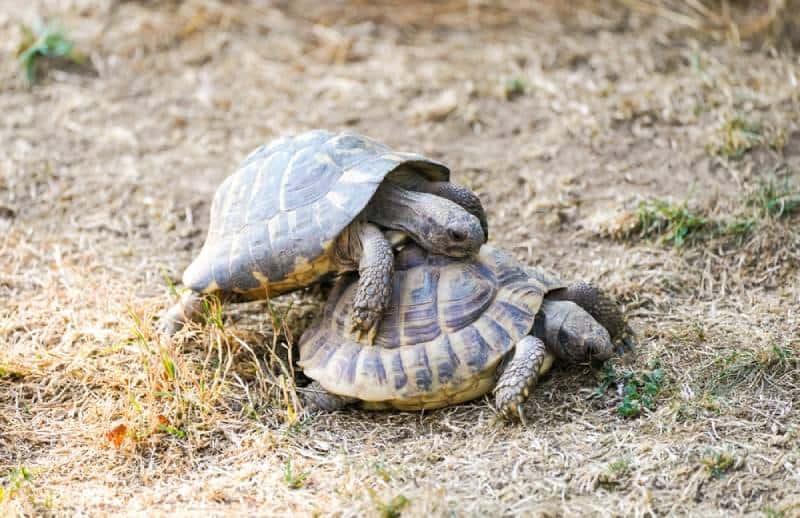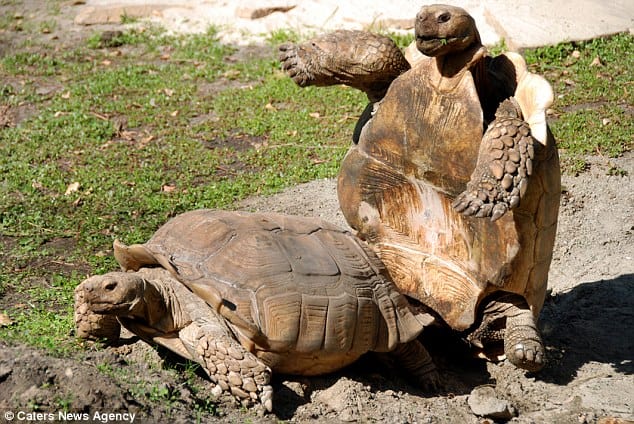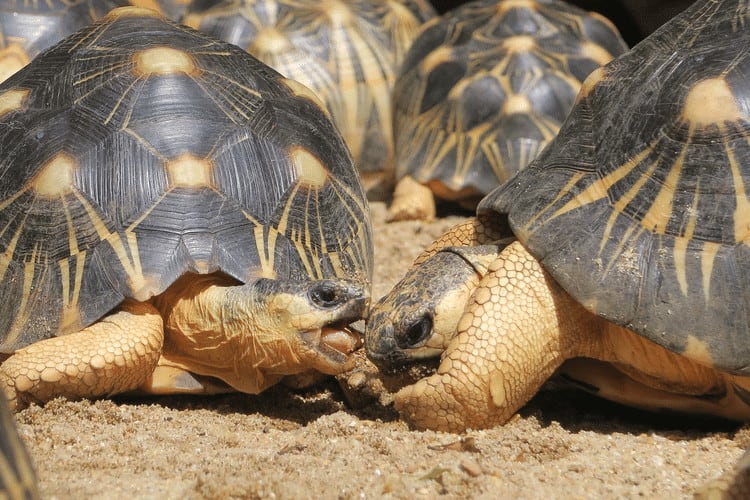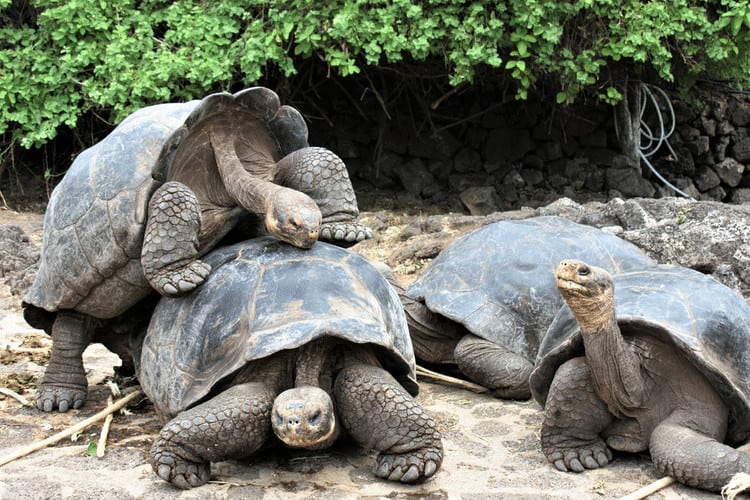How do Tortoises mate? As a tortoise owner and enthusiast, I have always been fascinated by the intricate process of tortoise mating and reproduction. It is a natural phenomenon that plays a crucial role in the survival and continuation of these incredible creatures. Understanding the basics of tortoise mating is not only important for breeders but also for responsible pet owners who want to provide their tortoises with optimal care.
Tortoises are known for their slow-paced lifestyle, but when it comes to mating, they can exhibit surprising agility and determination. The process begins with courtship rituals that involve specific behaviors and signals between male and female tortoises. These rituals are essential in establishing compatibility between potential mates.
Key Takeaways
- Age and size are important factors in tortoise mating.
- Male and female tortoises have physical and behavioral differences.
- Courtship rituals and signals play a crucial role in tortoise mating.
- Temperature and climate can impact tortoise breeding.
- Post-mating care is essential for the health and well-being of tortoise pairs.
The Importance of Age and Size in Tortoise Mating
Age and size play significant roles in determining whether two tortoises are compatible mates or not. It is crucial to consider these factors when selecting potential partners for breeding purposes or even when introducing new companions into an existing group.
In general, it is recommended to wait until both male and female tortoises reach sexual maturity before attempting any breeding activities. This ensures that they are physically ready for reproduction, reducing the risk of complications or health issues during the process.
Additionally, size compatibility is essential to ensure successful copulation without causing harm or injury to either party involved. Mismatched sizes can lead to difficulties during mating attempts, potentially resulting in stress or physical trauma for one or both individuals.
Identifying Male and Female Tortoises: Physical Characteristics and Behavioral Differences
Distinguishing between male and female tortoises can be challenging at first glance, especially if you’re new to owning these reptiles. However, there are several physical characteristics that can help you determine their gender accurately.
Male tortoises often have longer tails compared to females; this difference becomes more pronounced as they mature sexually. Additionally, males tend to have concave plastrons, which allow for easier mounting during copulation. Females, on the other hand, have shorter tails and flat or slightly convex plastrons.
Behavioral differences between male and female tortoises become more apparent during the mating season. Males may exhibit increased aggression or territorial behavior as they compete for the attention of females. They might also engage in head-bobbing displays or vocalizations to attract potential mates.
The Role of Courtship in Tortoise Mating: Understanding the Rituals and Signals
| Metrics | Description |
|---|---|
| Courtship duration | The length of time the male and female tortoise engage in courtship rituals before mating. |
| Head bobbing frequency | The number of times the male tortoise bobs its head during courtship to signal its interest to the female. |
| Shell biting | The behavior of the male tortoise biting the female’s shell during courtship, which may be a form of aggression or a way to stimulate the female. |
| Mounting success rate | The percentage of courtship attempts that result in successful mating. |
| Female receptivity | The degree to which the female tortoise is receptive to the male’s courtship signals and behaviors. |
| Male aggression | The level of aggression displayed by the male tortoise during courtship, which may be a way to establish dominance or intimidate rivals. |
Courtship rituals are an integral part of tortoise mating, serving as a means for males to demonstrate their suitability as mates to females. These rituals involve a series of behaviors and signals that communicate readiness and interest.
One common courtship behavior is circling, where the male will circle around the female while bobbing his head up and down. This display showcases his strength and agility while also allowing him to assess her receptiveness.
Another important signal during courtship is chin rubbing. The male will gently rub his chin against the female’s shell or limbs, leaving behind pheromones that can stimulate her reproductive instincts.
Copulation in Tortoises: The Mechanics of Mating and Reproduction
Once courtship has been successfully completed, copulation can take place between male and female tortoises. Understanding the mechanics of this process is crucial for ensuring successful reproduction.
During copulation, the male mounts onto the back of the female by extending his hind legs over her shell’s edges. He then uses his long tail to reach under hers until their cloacas align for sperm transfer.
It is essential to provide a suitable environment for copulation to occur comfortably without any obstructions or distractions that could disrupt their natural instincts.
The Role of Temperature in Tortoise Mating: Understanding the Impact of Climate on Breeding
Temperature plays a significant role in tortoise mating and breeding. These cold-blooded reptiles rely on external heat sources to regulate their body temperature, which, in turn, affects their reproductive capabilities.
In the wild, tortoises often mate during specific seasons when temperatures are optimal for successful reproduction. As a responsible owner or breeder, it is crucial to mimic these natural conditions as closely as possible to encourage mating behavior.
Providing a warm and well-lit environment can stimulate the reproductive instincts of your tortoises. This can be achieved through the use of heat lamps or heating pads strategically placed within their enclosure.
The Challenges of Captive Tortoise Breeding: Tips for Successful Reproduction in Captivity
Breeding tortoises in captivity comes with its own set of challenges that must be addressed to ensure successful reproduction. One common challenge is creating an environment that mimics their natural habitat as closely as possible.
It is essential to provide ample space for both male and female tortoises within their enclosure so they can engage in courtship behaviors without feeling cramped or restricted. Additionally, ensuring proper nutrition and a balanced diet is crucial for maintaining optimal health and reproductive capabilities.
Another challenge faced by breeders is finding compatible mates for their tortoises. It may take time and effort to locate suitable partners with similar age ranges and sizes that will increase the chances of successful copulation.
Common Mistakes to Avoid in Tortoise Mating: How to Prevent Injuries and Health Issues
During the mating process, there are several common mistakes that owners should avoid to prevent injuries or health issues from occurring.
One mistake often made by inexperienced breeders is attempting forced copulation between incompatible mates. This can lead to physical trauma or stress for both individuals involved, potentially resulting in long-term health complications.
Another mistake is neglecting post-mating care after copulation has taken place. Providing a stress-free environment with access to fresh water and a balanced diet is crucial for supporting the health and well-being of your tortoise pair.
The Importance of Post-Mating Care: Supporting the Health and Well-Being of Your Tortoise Pair
Post-mating care is essential for ensuring the health and well-being of your tortoise pair after copulation. This period allows them to recover from the physical exertion involved in mating while also preparing for potential egg-laying.
Providing a quiet and secluded area within their enclosure can help reduce stress levels during this time. It is also important to monitor their behavior closely, looking out for any signs of distress or complications that may require veterinary attention.
Maintaining proper nutrition during this period is crucial, as it supports the development of healthy eggs in female tortoises. A balanced diet rich in calcium will provide essential nutrients necessary for successful reproduction.
The Role of Genetics in Tortoise Breeding: Understanding the Implications of Inbreeding and Hybridization
Genetics play a significant role in tortoise breeding, with implications that must be considered to ensure the long-term health and viability of captive populations.
Inbreeding, which occurs when closely related individuals mate, can lead to genetic abnormalities or reduced fertility rates within offspring. It is important to avoid excessive inbreeding by introducing new bloodlines into breeding programs whenever possible.
Hybridization, on the other hand, involves breeding individuals from different species or subspecies. While this can result in unique offspring with desirable traits, it should be approached with caution as it may dilute genetic purity or disrupt natural ecosystems if released into the wild.
Celebrating the Beauty and Complexity of Tortoise Mating and Reproduction
In conclusion, understanding the basics of tortoise mating is not only important for breeders but also for responsible pet owners who want to provide optimal care for their beloved reptiles. Age and size compatibility are crucial factors when selecting mates, and identifying the physical and behavioral differences between males and females can aid in successful pairings.
Courtship rituals play a vital role in establishing compatibility, while copulation relies on proper temperature regulation and a suitable environment. Overcoming challenges in captive breeding requires careful attention to mimic natural conditions, provide adequate space, nutrition, and compatible mates.
Avoiding common mistakes during mating is essential for preventing injuries or health issues. Post-mating care supports the health of your tortoise pair during recovery and potential egg-laying. Understanding the role of genetics helps maintain genetic diversity while avoiding inbreeding or hybridization complications.
In celebrating the beauty and complexity of tortoise mating and reproduction, we gain a deeper appreciation for these incredible creatures’ natural instincts. By providing them with optimal care throughout their reproductive journey, we contribute to their overall well-being while ensuring their continued existence for generations to come.
FAQs
What is tortoise mating?
Tortoise mating is the process by which male and female tortoises engage in sexual reproduction to produce offspring.
How do tortoises mate?
Tortoises mate by the male mounting the female from behind and using his hind legs to grip her shell while he inserts his penis into her cloaca.
When do tortoises mate?
Tortoises mate during the breeding season, which varies depending on the species and location. In general, tortoises mate in the spring and summer months.
How long does tortoise mating last?
Tortoise mating can last anywhere from a few minutes to several hours, depending on the species and the individuals involved.
How often do tortoises mate?
Tortoises typically mate once or twice a year, during the breeding season.
Do tortoises mate for life?
Tortoises do not mate for life. They may mate with multiple partners during the breeding season and may mate with different partners in different breeding seasons.
How can you tell if a tortoise is male or female?
The easiest way to tell if a tortoise is male or female is by looking at the size and shape of their tail. Males have longer and thicker tails, while females have shorter and thinner tails. Additionally, males have concave plastrons (the bottom part of their shell) while females have flat or slightly convex plastrons.
What are some common mating behaviors in tortoises?
Common mating behaviors in tortoises include head bobbing, circling, and biting. Males may also emit grunting or hissing sounds during mating.
Originally posted 2024-01-23 06:42:23.



